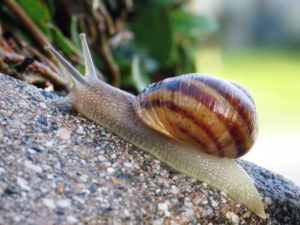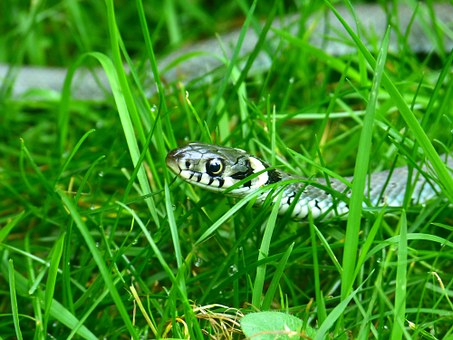A team of researchers from Sussex University in England has carried out a new study which reveals that snails use two neurons in the brain to make “complex decisions.”
In the first-of-its-kind study, the team, including Michael Crossley, Kevin Staras and György Kemenes, all from the University of Sussex in England, examined the brain activity of freshwater snails (mollusc Lymnaea) and found that these snails use a circuit comprising of just two neurons to make complex decisions. The team monitored how snails behave and make decisions while they are searching for food (lettuce). The activity in snail’s brain was measured by using electrodes. Researchers found that a controller type neuron in snails’ brain signals availability of food nearby, and another neuron transmits signals to tell the motivational state of the snail, that is, whether it’s hungry or not.
“What goes on in our brains when we make complex behavioral decisions and carry them out is poorly understood,” said George Kemenes, the lead researcher from the University of Sussex.
“Our study reveals for the first time how just two neurons can create a mechanism in an animal’s brain which drives and optimizes complex decision-making tasks. It also shows how this system helps to manage how much energy they use once they have made a decision.”
According to scientists, this study also reveals that the neuron system enables snails to save energy by reducing brain activity when food is not available nearly.
Prof Kemenes also believes that this discovery could lead to designing of “robot brains” based on the principle of using fewest possible components to perform complex tasks.
“Our findings can help scientists to identify other core neuronal systems which underlie similar decision-making processes.”
“This will eventually help us design the ‘brains’ of robots based on the principle of using the fewest possible components necessary to perform complex tasks.”
The researchers also claim that their study demonstrates that “the system employs an energy management strategy, switching between a low- and high-use mode depending on the outcome of the decision.”
“Our study reveals a parsimonious mechanism that drives a complex decision-making process via regulation of levels of tonic inhibition and phasic excitation.”
The detailed results of the study have been published in the journal Nature Communications.

